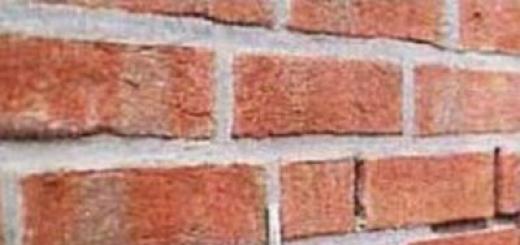We will send the material to you by e-mail
Repairs in older apartments often require a complete replacement of all heating radiators. Cast iron monsters of the Soviet period cannot last forever, and their efficiency leaves much to be desired. A logical question arises: which heating radiators are best for an apartment? The price of the product is not the only selection criterion. Here it is important to think through everything to the smallest detail - from the aesthetic component to practicality and economy.
The choice of heater determines the comfortable temperature in the house
Which heating radiators are better to install in an apartment: types, disadvantages and disadvantages
Heating devices are made of various materials, each of them reacts differently to pressure and temperature. So, types of heating batteries in an apartment:
Convector batteries made of steel
These are panels and between which metal plates are installed. The coolant circulates in the panels. It is believed that these devices have the highest heat transfer.
Such devices are very popular among owners of country houses. Steel heaters are produced in the Czech Republic, Italy, and Finland. They differ in the number of sections and metal ribs
The positive aspects of steel radiators:
- good heat dissipation;
- low energy intensity;
- low inertia;
- environmental friendliness;
- reasonable price.
Disadvantages of steel batteries:
- tendency to rust;
- instability to water hammer.
It is the last minus that is a significant obstacle to installing a steel heater in a multi-story building. When deciding which heating radiators are best for an apartment, steel heaters should be considered last.
Cast iron batteries
These products are considered the cheapest and most durable.

Cast iron casting in modern or retro style is produced in England, France and Turkey.These radiators can withstand up to twelve bar pressure and coolant temperatures up to one hundred and ten degrees. Thus, they are not afraid of water hammer and boiling water in the heating system.
Advantages of cast iron heating systems:
- half a century of service life;
- resistance to temperature and pressure of central heating systems
- long-term heat conservation, slow cooling.
Flaws:
- heavy weight, which requires particularly strong fasteners;
- long warm-up period;
- a large amount of coolant used;
- fragility.
Aluminum heaters
When solving the problem “How to choose heating radiators for an apartment with central heating,” unfortunately, products made of light and durable aluminum should be excluded from the list. These batteries have the best thermal conductivity and attractive exterior. But they are completely unsuitable for use in a centralized heating system due to their instability to water hammer.
Aluminum heaters are available in lithium and extrusion types and can withstand pressures of only 16 bar.

Therefore, if the apartment is equipped with its own boiler, it is difficult to find better radiators than these.
Advantages:
Disadvantages of aluminum heaters:
- short service life - up to fifteen years;
- weak convection;
- chemical instability of the material;
- inability to withstand water hammer.
Bimetallic products
At first glance, these batteries are very similar to aluminum ones. Their body is made of this light metal, and the interior consists of steel elements.

Bimetallic heaters are produced in Russia and Italy.On sale you can find pseudo-bimetallic products, additionally reinforced with steel verticals. They are less resistant to corrosion, but have increased heat transfer.
Advantages of bimetallic products:
- high heat transfer;
- resistance to water hammer;
- ease of installation;
- aesthetics.
Minuses:
- high price.

Which radiators are better: aluminum or bimetallic?
There can only be one answer to this question: of course, bimetallic heaters are the best choice. They not only combine all the advantages of aluminum and steel products. These batteries are characterized by increased strength and resistance to water hammer, which often threatens central heating systems and is the main cause of numerous accidents in heating networks.
Helpful information! Bimetallic devices can withstand pressure up to twenty atmospheres!

Selection and calculation
So, how to choose heating batteries (radiators) for an apartment in an apartment building:
- Devices must maintain a pressure of at least 15 atmospheres.
- Heaters must withstand water hammer.
- The design of the device must be resistant to corrosion and chemical attack.
- The heat transfer performance of the device should be studied.

The aesthetics of the device is not the last selection criterion
- Batteries may not last forever, but the longer they last, the better.
How to calculate the number of radiators
To calculate, you need to measure the area of the room. This is a problem for a third grader: you need to multiply the width by the length. For example, a standard room 3x5 m = 15 sq. meters of area.
To heat an apartment located in central Russia, an average of 41 W of thermal energy per square meter is required. Multiply 15 by 41 and we get 615 W. For our own peace of mind, let's round the figure to 650.
Each modern battery has technical documentation indicating its thermal power. All that remains is to select the required number of sections. The proposed calculation option is very conditional and does not take into account the characteristics of a particular apartment. Therefore, we suggest using the calculator below.

What are the best heating radiators for an apartment: price of products and manufacturers
Despite the fact that the choice of heating devices on the domestic market is very wide, there are undoubted leaders among manufacturers who have earned an impeccable reputation:
- Smart (China);
- Kermi (Germany);
- Purmo (Finland);
- Rifar (Russia);
- Royal (Italy);
- Global (Italy).

To solve the problem of which heating radiators are best for an apartment, the price of the product is not decisive, but remains an important factor. Below are the most popular battery models.
Table 1. Overview of popular radiator models
| Image | Model | Material | Mounting type | Heat dissipation, W | Average price, rub. |
|---|---|---|---|---|---|
 | Monolit 500 Rifar | bimetallic | wall | 1960 | 6890 |
 | STYLE 500 PLUS Global | bimetallic | wall | 1140 | 6991 |
 | RS 500 Bimetal Sira | bimetallic | wall | 2010 | 8450 |
 | Thermo 500 Revolution Royal | aluminum | wall | 1448 | 3704 |
 | Alum 500 Rifar | aluminum | wall | 1464 | 3840 |
 | RAP Thermal 500 | aluminum | wall | 1288 | 3120 |
 | 22,500 FTV(FKV) Kermi | steel | wall | 1930 | 5332 |
 | 22 500 Compact Purmo | steel | wall | 1470 | 4119 |
 | 2180 Arbonia | steel | wall | 780 | 8132 |
 | 500 STI Nova | cast iron | wall | 1200 | 6470 |
Reading time ≈ 8 minutes
If you want to determine which heating battery is best for an apartment, then first of all you should not discount the difference in the source of coolant, that is, perhaps both centralized and autonomous. For the effect of heating the room, there is practically no difference here, but the pressure in the circuit differs, therefore, the source material from which the device is made must be of appropriate strength. But when choosing a radiator made of any metal or alloy, there are also some nuances that will have to be taken into account.
Difference in pressure between centralized and autonomous heating systems
Pressure difference in the system with centralized heating
In order to select heating radiators for an apartment in a multi-storey building, you will have to take into account the possible operating and pressure testing pressure in the system. First of all, you should consider the load on the circuits when connecting to centralized boiler houses or CHP plants. In this case, we are not interested in static (gauge) or dynamic pressure - we will leave that to the designers.
The pressure in the system is influenced by the following factors:
- power of equipment (pumps) supplying water to the consumer;
- diameter of risers and sunbeds in the system;
- height of the apartment in the house (number of storeys);
- wear of the pipeline (emergency situations).
Taking into account all the factors listed above, the working pressure can be:
- 1-5 floor – 2-4 atm;
- 6-9 floor – 5-7 atm;
- 10th floor and above – 12 atm.
To identify defects and prevent breakthroughs from water hammer during startup, a pressure test is used that exceeds the working pressure by 0.5-1.5 times, that is, such a test involves a load of up to 15 atmospheres, which not every radiator can withstand.
In autonomous heating systems, this issue is most often not even considered, since there the pressure does not exceed 1-3 atmospheres, and when this threshold increases, the safety valve on the boiler is activated. There are, of course, some brands of boilers where the heat exchanger is capable of withstanding up to 7 atmospheres, but this is the safety margin of the unit, and not the need of the circuit, so the valve will operate at 4 atmospheres or before reaching this mark.
Selection of radiators
All heating devices can be divided not only by the original material of manufacture, but also by their design. They are mainly divided into four types:
- Sectional - they are also called columnar, since the vertically located sections resemble columns. Devices of this type are prefabricated structures, therefore, to change the power, you can add or remove the required number of sections.
- Tubular - are two horizontal pipes Ø50-75 mm, connected by vertical tubes of smaller diameter. They are used only for centralized heating.
- Panel - made mainly of metal, although there are also concrete options. Power depends on the volume of the tank.
- Plate – designed as an economical option for materials. They are a horizontal pipe with plates welded onto it, which promotes convection heat transfer.
Heating radiators - which ones are better?
Differences in materials
Let's consider a number of options, taking into account the source materials. That is, the choice of heating devices depends on these parameters; they may or may not be suitable simply due to technical or aesthetic characteristics.
Aluminum heating devices

Aluminum radiators of different sizes and power
There is a lot of talk about aluminum radiators as some kind of know-how or just some kind of super-structure that can provide the maximum heat transfer and energy savings for the boiler. In fact, this is far from true, and more precisely, it is not true at all. The only truth here is that aluminum has very good heat dissipation and... Yes, that's all! It is heat transfer that lies in the artificially created excitement around aluminum; in addition, this metal has more critical disadvantages.
Firstly, this is a low resistance to pressure and, in order not to go into calculations, let’s say that they are suitable exclusively for autonomous heating, where the operating pressure does not exceed 2-3 atmospheres. In addition, aluminum itself is a rather “delicate” metal and water with its salts and alkalis will destroy it. Consequently, the use of aluminum depends entirely on the quality of the coolant, which is only possible in the private sector or.
To be more precise, you have to add antifreeze-type drugs to the water (more on this separately). Not a single centralized boiler house in the world has yet provided the proper conditions for aluminum radiators!
Copper heating devices

Copper heaters made according to the “buleryan” principle
It would be wrong to remain silent about copper heaters made on the convector or “buleryan” principle - these are perhaps the best devices based on the principle of heat transfer, although they are used extremely rarely. Of course, this is not so surprising, since copper is the most expensive of the non-ferrous metals (precious ones are not taken into account). Here, plate radiators and those made according to the “buleryan” principle behave best, although I did not mention them in the “Selection of radiators” header, but this is not so important.
Note. Most often, such devices are made in the form of plate structures - they are much cheaper, but less effective. The Buleryan system has the highest heat transfer of all possible at the moment!
Of course, copper is stronger than aluminum and can be used in high-rise buildings, it is very effective, beautiful and convenient, but... too expensive. Firstly, if you need to find out which heating battery is best for an apartment, then first of all you are interested in heat transfer and pressure resistance, that is, service life. Secondly, you will ask how much it costs and the second question will most often be fatal... You will politely refuse and buy another heating device, especially since they are more suitable for autonomous heating.
Cast iron radiators

Cast iron radiators are known to all people
Finally, we came to such familiar and familiar cast-iron radiators that are familiar to any tenant of an apartment in a multi-storey building, but I want to warn you - do not consider them “suck” - this is not just a delusion, but basic technical illiteracy. First of all, cast iron is one of the metals that is least susceptible to corrosion, and this is very convenient in high-rise buildings, since there is no fear of rusting when draining the coolant. In addition, cast iron itself is a weak heat-conducting material, that is, it takes a long time to heat up, but it takes a long time to cool down. It was this factor that became the decisive argument when choosing heaters for the apartments of Soviet citizens!
But that’s not all - cast iron can withstand operating pressure up to 16 MPa (maximum pressure testing or water hammer), and also maintain temperature (this has already been mentioned, but it’s not superfluous). Some people may not be happy with the appearance of a cast iron battery, but do not forget that this is one of the most effective for central heating systems! For autonomous structures, cast iron is unacceptable due to the duration of heating of the sections.
Steel radiators

Panel type steel radiators
First of all, we can mention that the technical characteristics of steel heating devices are no worse (and even better) than those of cast iron radiators, but the problem is that ordinary black steel is susceptible to corrosion. There is no point in understanding the characteristics of materials - this is not the topic, just a steel battery will not last long, although it does not care about any pressure changes. Such devices can be of any configuration listed in the “Selection of radiators” section.
Note. From personal practice. A steel radiator of 6 sections leaked in the 5th year of operation. The rib on the bottom rusted; I first repaired it with dry welding, and at the end of the heating season I simply removed it and threw it away.
Bimetallic radiators

Bimetal radiators of different sizes
Now let's talk about the best household heating appliances - those that can withstand the highest pressure and temperature in the heating circuit and at the same time have the longest service life. So, the walls of such a device are made of two metals - steel and aluminum, therefore, one element is responsible for the maximum strength of the heater (steel), and the other for the maximum heat transfer efficiency (aluminum). Such a tandem can be called the most successful option of all devices for centralized or autonomous heating systems of radiator circuits.
Features of choosing radiators
Conclusion
Perhaps you will not dispute the question of which heating radiators are better for an apartment if the answer suggests itself - bimetallic ones. But don’t rush into buying and first understand the classification of such devices - research is never superfluous!
Every owner wants his apartment to be warm, cozy and comfortable. Among the many offers, we often begin to doubt and get lost in choosing, so we will tell you about which heating batteries are best for an apartment in this publication.
If you go to the store and start studying the assortment of heating radiators, even a whole day will not be enough, because the models differ not only in the number of sections and dimensions, but also:
- connection type and installation depth;
- quantity and quality of water contained in the device;
- thermal power;
- quality of decorative coating.
It is also worth considering the country in which the radiators are manufactured. This, as well as brand recognition, often influences the cost of products. For an apartment, it is important to choose the highest quality model with the longest possible service life, without overpaying just for the brand name.
On a note! Heating devices are manufactured in accordance with GOST 31311-2005. Cast iron radiators are subject to standard number 8690 from 1994.
Prices for cast iron radiators can vary greatly. New elite-class and designer products are much more expensive than classic models.
When choosing such a device, you should consider:
- heavy weight of both floor and hanging products;
- complexity of installation. It will be difficult or impossible to cope alone;
- the need to tighten connections before installation;
- the need to install a multi-section radiator, since the room is heated mainly by radiation, and convection accounts for no more than 25%;
- impossibility of hidden installation of radiators and pipelines;
- difficulty in cleaning and painting.
Advice! In order for the radiator to work properly and at full capacity, it must be repaired every few years. The sediment from the coolant settling in the sections reduces the heat transfer level of the device.
The best floor-mounted sectional cast iron radiators for an apartment.
Model Heat dissipation Center distance, mm Maximum operating temperature, °C Weight of one section, kg Estimated cost of one section (as of 2019), rub. ΔT = 60°C heat transfer 120 W. 300 110 9,44 8 / 10,5 From 8 662 ΔT =60°C heat transfer 118 W. ΔT =70°C heat transfer 144 W.
400 110 8,2 10 / 15 From 4 260 ΔT =60°C heat transfer 163 W. 500 110 11 8 / 15 From 3 520 Important! Don’t forget to consider the type and diameter of the connection when choosing a radiator for your apartment.
The best wall-mounted sectional cast iron radiators for an apartment.
Model Heat dissipation Center distance and dimensions, mm Connection type Weight of one section, kg Working and testing pressure, bar Estimated cost (as of 2019), rub. ΔT =70°C heat transfer 87.5 W. 500 Lateral 4,9 12 / 18 7 sections from 7 378 ΔT =60°C heat transfer 53.9 W. 500 Bottom side 4 18 / 27 1 section from 1,497 ΔT =60°C heat transfer 146.9 W. 500 Lateral 5,5 10 / 15 1 section from 2 360 Do not know, how to change the heating battery in an apartment? Start by studying the theory to avoid mistakes during installation. Check out. Do not forget that replacement of radiators during the heating season is carried out only after obtaining the appropriate permission.
Steel
Steel heating radiators are not the best option for installation in an apartment because:
- react negatively to coolant drainage;
- have a small operating pressure - up to 6 atmospheres;
- vulnerable to water hammer;
- incompatible with some polypropylene pipes.
Despite significant shortcomings, steel radiators are presented in a large assortment with a good price-quality ratio. Such devices can be equipped with a thermostat, hidden installation is possible.
Steel heating radiators are best installed in high-rise buildings with autonomous heating or private houses.
Aluminum
Radiators of convective-radiation type, designed for operating pressure up to 9 atmospheres. They quickly warm up rooms and can be equipped with a thermostat. Such heating batteries are much lighter than cast iron ones, but at the same time they have high heat transfer.
However, these advantages are offset by one significant drawback. Aluminum radiators are too sensitive to the chemical composition of water. And in city apartments it is very difficult to control the quality of the coolant.
In addition, aluminum is a soft metal; pressure drops in the system (water hammer), which often occur in multi-story buildings, significantly reduce the service life of the device and lead to breakdowns.
It is better to install aluminum radiators in private homes, provided that non-freezing liquid is not used as the coolant, and the system will provide for automatic air release (or a gas/air release valve must be installed on each radiator).
Combination of metals
Namely, a combination of steel or copper pipes inside and aluminum panels outside. Such radiators are called bimetallic. Products made of steel and aluminum are lightweight, durable, highly efficient, and operate for more than 20 years without maintenance.
Bimetallic radiators are produced by the companies Santekhprom (Russia), Royal Thermo (Russia) and Global (Italy).
Which bimetallic radiators are best for an apartment?
You can always choose an option to suit your taste, color, budget, and we offer a table to familiarize yourself with the characteristics of popular models.
Brand Model Section weight, kg 115 185 2,3 110 185 2,2 110 171 1,85 110 171 1,87 110 188 1,94 In addition, the Profi Bm 500 model from the Russian brand Rommer has received a lot of positive reviews.
The radiator manifold is completely steel. The design was developed by leading Russian engineers in accordance with GOST. The sections have a safety design without sharp corners or edges. The decorative coating is applied in two stages (cataphoresis method). Each section weighs one and a half kilograms and holds 180 ml of water. The heat transfer of one section at ∆T = 70°C is 143.3 W. And the price of one section is less than five hundred rubles.
It is worth paying attention to another Russian brand - Halsen. The company produces sectional radiators using injection molding and provides a twenty-year warranty on its products. Model BS 500 with ten sections weighs only 17 kg, product dimensions are 80 x 96 x 56.8 cm. The thermal power of one section is 183 W. The device is compatible with plastic, steel and copper pipes, is resistant to water hammer, and the tightness is not compromised upon contact with aggressive liquids. All Halsen products comply with GOST 31311-2005.
There are also semi-bimetallic radiators. That is, only the “core” pipes are made of steel. All other radiator elements are aluminum. Due to this combination, heat transfer is slightly improved (compared to the previous option) and the price is reduced.
Semi-metallic radiators are produced under the brands Rifar (Russia), Gordi (China), Sira (Italy).
Brand Model Maximum coolant temperature, °C Heat transfer at ∆T = 70°C, W Section weight, kg Rifar 135 138 / 196 1,45 /2,1 Gordi 135 170 1,9 Sira 110 145 / 201 1,48 / 1,92 Radiators made of aluminum and steel can be sectional or solid.
The characteristics of bimetallic radiators made of steel and aluminum must be within the following limits:
- heat transfer 170-190 W at ΔT =70°C;
- working pressure of at least 16 atmospheres. In a centralized heating system, a pressure of about 10 atmospheres is maintained. With a sharp increase in pressure, the radiator should not burst;
- center distance 200, 300, 350, 500 or 800 mm. This parameter is selected according to the existing heating pipe layout in the apartment;
- The maximum withstand temperature is 90°C. Typically, the coolant temperature in apartment buildings is 5-10°C lower than this indicator.
Video - How to choose a bimetallic radiator?
Electric radiators
They are usually not used in apartments as the main source of heat, except for short periods of the year, when the radiators are already or still cold, and outside the window the thermometer suddenly quickly crept down. To avoid wrapping yourself in 5 blankets and going to bed with the oven open (this is very, very unsafe!), you just need to plug in an oil radiator or convector.
Oil heaters
- Installation type: floor only.
- The number of instrument sections is from 3 to 14.
- Radiator power up to 3000 W.
- The height of radiators is usually in the range of 50-80 cm, width up to half a meter.
- Oil radiators weigh a lot - up to 30 kg. It is better not to purchase models that are too light.
- Additional options: fan, humidifier, heated towel rail, tilt sensor, automatic switch-on function and room frost protection.
Calculator for calculating the number of sections for a heating radiator


























